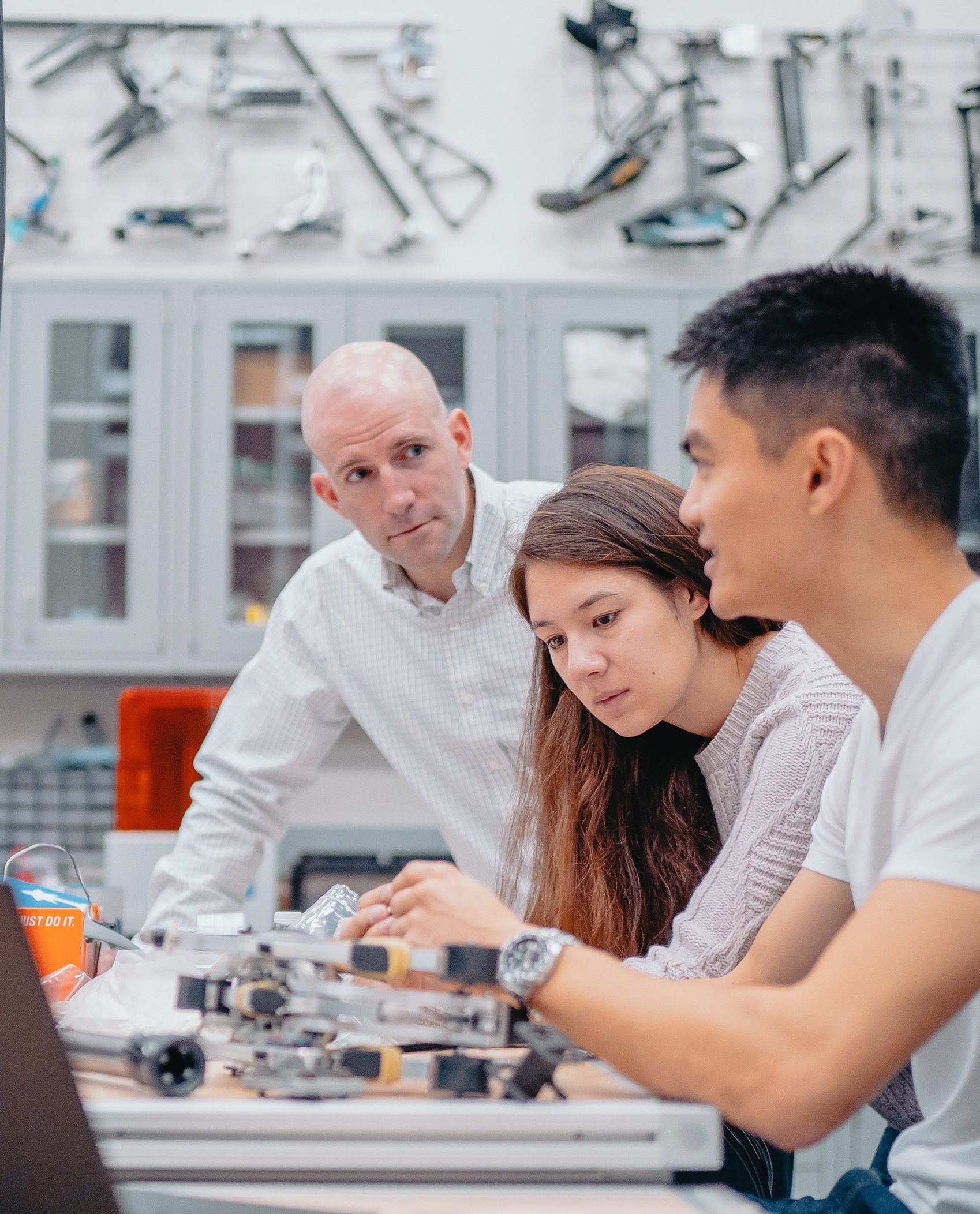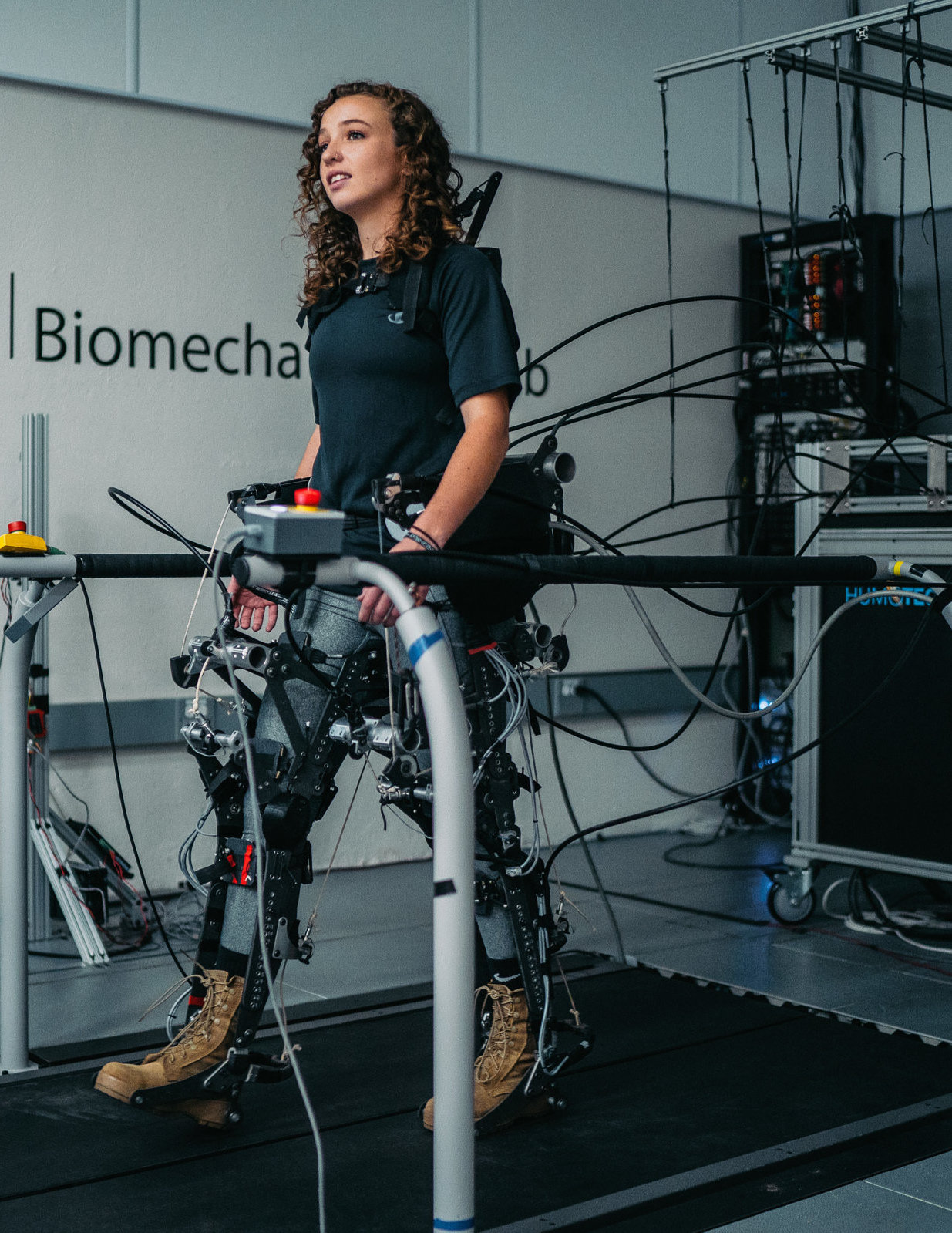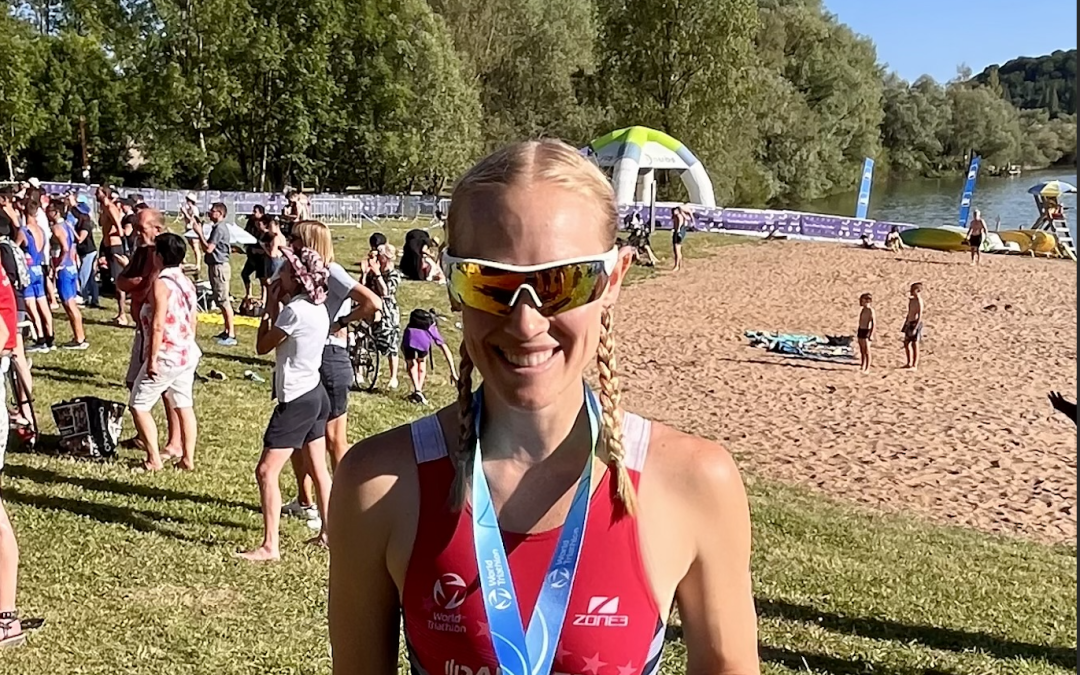When did you first become interested in biomechatronics? What has your journey to Stanford been like?
I’ve always been interested in designing and building things, and in high school a great teacher turned me on to robotics and automation. In college, another great teacher got me started on walking robot research and we made a big breakthrough. I loved it and knew I wanted to be a professor, so I went to grad school to pursue a PhD. I studied biomechanics, because I thought that prosthetics research would be a good opportunity to apply the technologies developed for walking robots to make devices that really help people. It turned out to be a lot harder than I had thought!
My main project in grad school made walking harder, not easier, for people with amputation. When I became a professor, I rethought the way we try to design biomechatronic devices. My lab now focuses on making it easy to try lots of designs on people, quickly and systematically, so that we can figure out what really works. We then take what we’ve learned and turn it into prototypes of products that we hope will be used by people in the real world.
Help our nonprofit curate more inspiring stories.

“I believe we’re getting close to a tipping point- when the first truly successful exoskeleton products hit the market.“
Tell us more about the projects you’re currently working on. What questions or challenges are you trying to address with your lab?
Our main goal is to make robots that people can wear on their legs to improve their mobility, especially if they have a disability that impairs movement. We’ve designed exoskeletons that allow unimpaired people to walk faster and use less energy while walking in the real world, and we’re working on devices that can do the same for older adults, people with chronic stroke, and people with amputation. We’re also working on ways to improve balance and reduce joint pain.
Most of our devices are worn on the ankle, like a tall, robotic boot, but some are worn on the knees and hips too. Our devices have led to the largest improvements in performance of any exoskeleton to date. The key to our success has been human-in-the-loop optimization, which is a way of automatically customizing the assistance to the needs of an individual user. We’re excited about this approach because it could be used by any assistive device to improve performance.
“It may still take a couple decades before there are products available for people with unusual and severe impairments, but it’s only a matter of time.”

What do you think are the biggest hurdles to widespread bionics adoption for people with mobility disabilities?
Simply put, the devices need to help a lot while only being a little bit of a nuisance. Until very recently, devices simply didn’t help much or at all. We’re finally starting to see meaningful improvements in performance for unimpaired users, for example a 10% improvement in speed and a 25% improvement in energy cost when using an ankle exoskeleton in one of our recent studies. Making those improvements has required careful study by scientists, and a lot of time and funding. As we figure out how to extend these benefits to people with specific disabilities, it will finally become worthwhile to use devices like this. Then scientists will need to work with companies to help make products that not only improve mobility, but are also reliable, easy to use, comfortable, and not too expensive.
What excites you about the future of bionics? What advances might we anticipate over the next 5, 10, or 20 years?
I believe we’re getting close to a tipping point — when the first truly successful exoskeleton products hit the market, I expect we’ll see an influx of investment and then a rapid expansion in available devices. I expect the first big successes will come in consumer products for people with mild impairments or jobs that involve a lot of walking, and I expect they will come in the next couple of years. This will make it much easier to develop devices for people with specific impairments; there will be more funding for research and development, and more reliable hardware and software available to incorporate. It may still take a couple decades before there are products available for people with unusual and severe impairments, but it’s only a matter of time.
I feel very lucky to be here to participate in the bionic revolution! We’re going to help a lot of people.



